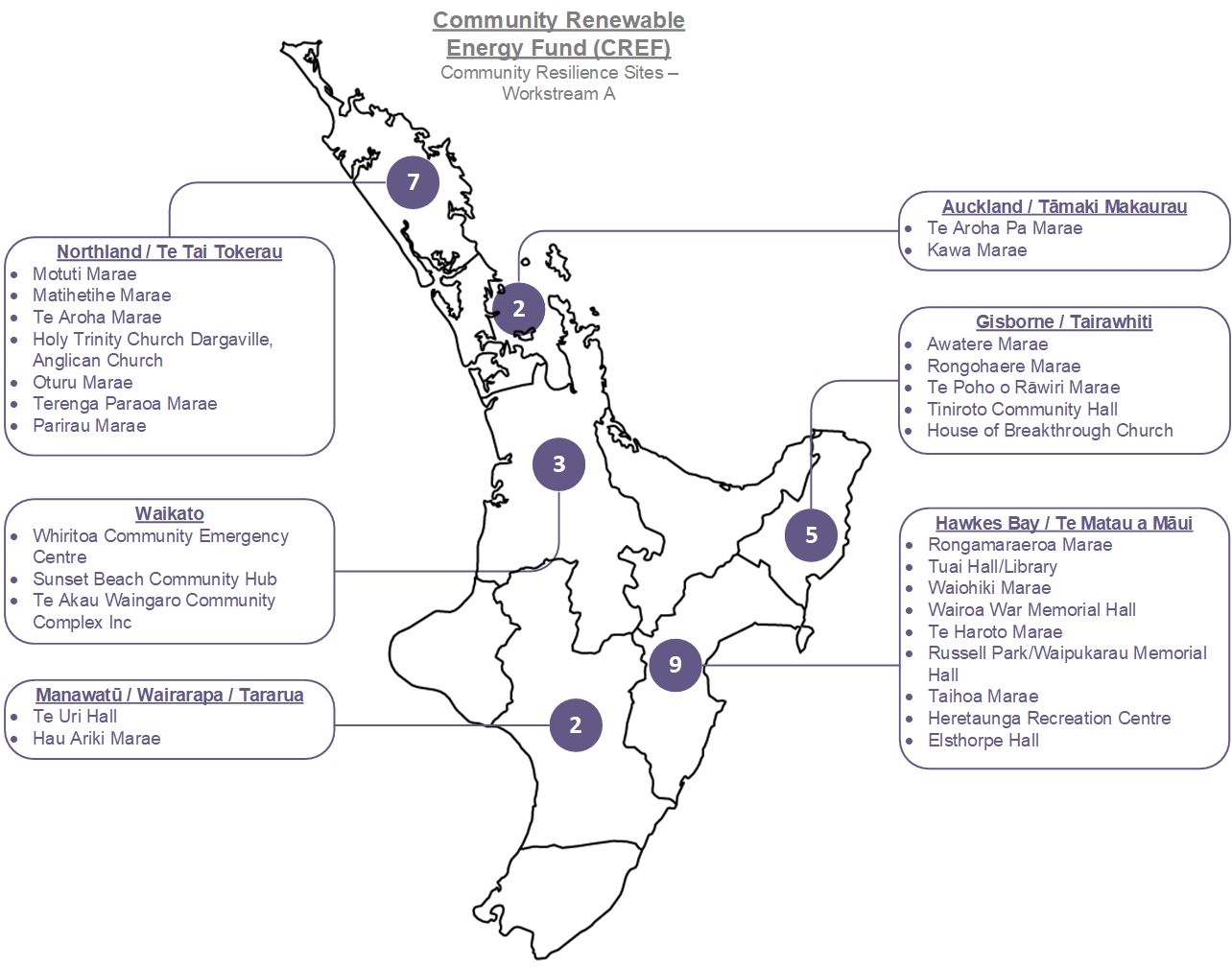Community Renewable Energy Fund
The government has committed $28 million to support community-based renewable energy projects to help households afford and secure the energy they need. This fund supports the government’s effort to build energy resilience in communities.
On this page
The Community Renewable Energy Fund is now administered by the Energy Efficiency and Conservation Authority (EECA).
You can phone EECA on 0800 358 676 or contact them at their website.
Contact EECA(external link) — EECA
The Community Renewable Energy Fund (CREF) has been established to support renewable energy projects that help communities access secure, renewable and more affordable energy. Cheaper power also encourages households to better heat their homes, which leads to improved health outcomes.
Some communities, particularly those in remote areas, don’t have reliable access to affordable energy. For example, some communities aren’t connected to the national electricity grid, and others may be at higher risk of power outages from natural hazards, such as earthquakes, storms, and floods. These risks will increase as our climate changes.
Investing in locally generated electricity helps enhance community resilience by providing an alternative and more secure source of electricity, while also increasing energy independence.
This new fund builds on the success of the Māori and Public Housing Renewable Energy Fund.
Māori and Public Housing Renewable Energy Fund
Community resilience sites

Text description of Community Renewable Energy Fund (CREF) resilience sites map
Community Resilience Sites
As of November 2024, the above 65 sites have been selected to receive funding for solar photovoltaic (PV) and battery systems. The remaining sites will be published shortly.
Approximately $6.5 million is currently being allocated to communities in regions affected by Cyclone Gabrielle and other 2023 severe weather events.
Up to 70 community buildings used to support the emergency response during the 2023 North Island severe weather events are being fitted with solar PV and battery systems. Areas identified for targeted funding are Northland, Auckland, Waikato including Coromandel, Tairāwhiti, Eastern Bay of Plenty, Hawke’s Bay and Wairarapa.
Community buildings are often used in civil defence events to protect people during and immediately after emergency events. The Fund’s investment in solar PV and battery systems for these buildings will provide communities with renewable energy for emergency events and for day-to-day use.
MBIE is not running a contestable open funding round for these grants. Suitable community buildings – like marae, places of worship, schools, and community halls – are being identified and prioritised in collaboration with government agencies, local authorities, Civil Defence Emergency Management and Cyclone Recovery staff, and community and Māori organisations involved in recovery efforts.
First funding package projects
A total of $1.12 million in funding was awarded to 5 high-quality projects in 2023. These projects were unsuccessful in an earlier bid to the Māori and Public Housing Renewable Energy Fund, missing only on the criteria to ‘predominantly support those in Māori or public housing’.
The new Fund has an expanded scope of eligible projects, and given the high quality of these 5 projects, early funding was released to these projects.
Media releases
Five community energy projects kick start, May 2023(external link) — Beehive.govt.nz
Renewable energy fund to support community resilience
Contact
For any enquires or to be updated about this Fund, you can phone EECA on 0800 358 676 or contact them at their website.
Contact EECA(external link) — EECA

